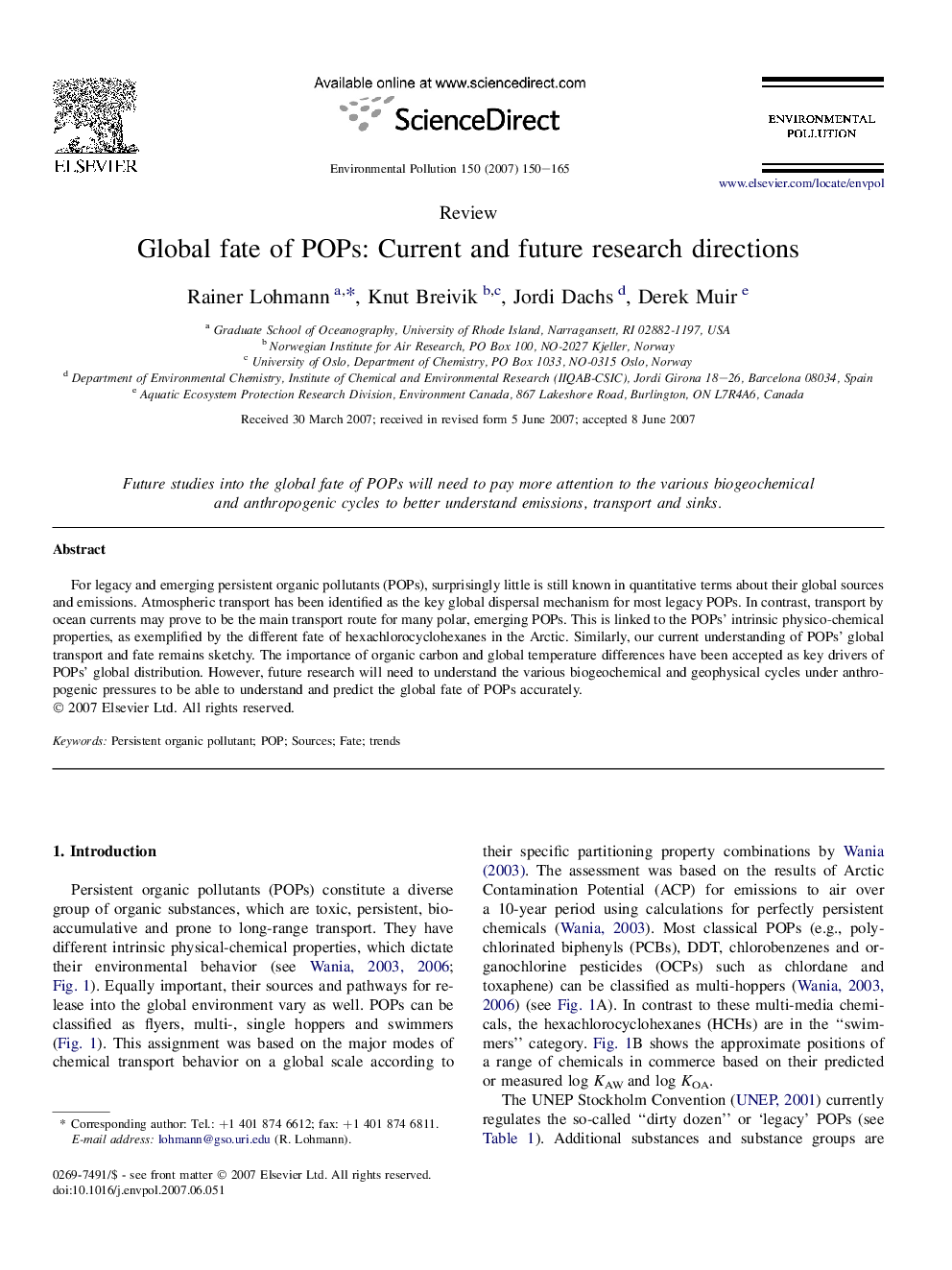| Article ID | Journal | Published Year | Pages | File Type |
|---|---|---|---|---|
| 4427271 | Environmental Pollution | 2007 | 16 Pages |
For legacy and emerging persistent organic pollutants (POPs), surprisingly little is still known in quantitative terms about their global sources and emissions. Atmospheric transport has been identified as the key global dispersal mechanism for most legacy POPs. In contrast, transport by ocean currents may prove to be the main transport route for many polar, emerging POPs. This is linked to the POPs’ intrinsic physico-chemical properties, as exemplified by the different fate of hexachlorocyclohexanes in the Arctic. Similarly, our current understanding of POPs’ global transport and fate remains sketchy. The importance of organic carbon and global temperature differences have been accepted as key drivers of POPs’ global distribution. However, future research will need to understand the various biogeochemical and geophysical cycles under anthropogenic pressures to be able to understand and predict the global fate of POPs accurately.
